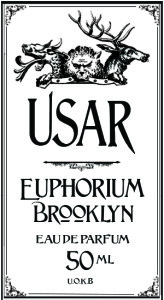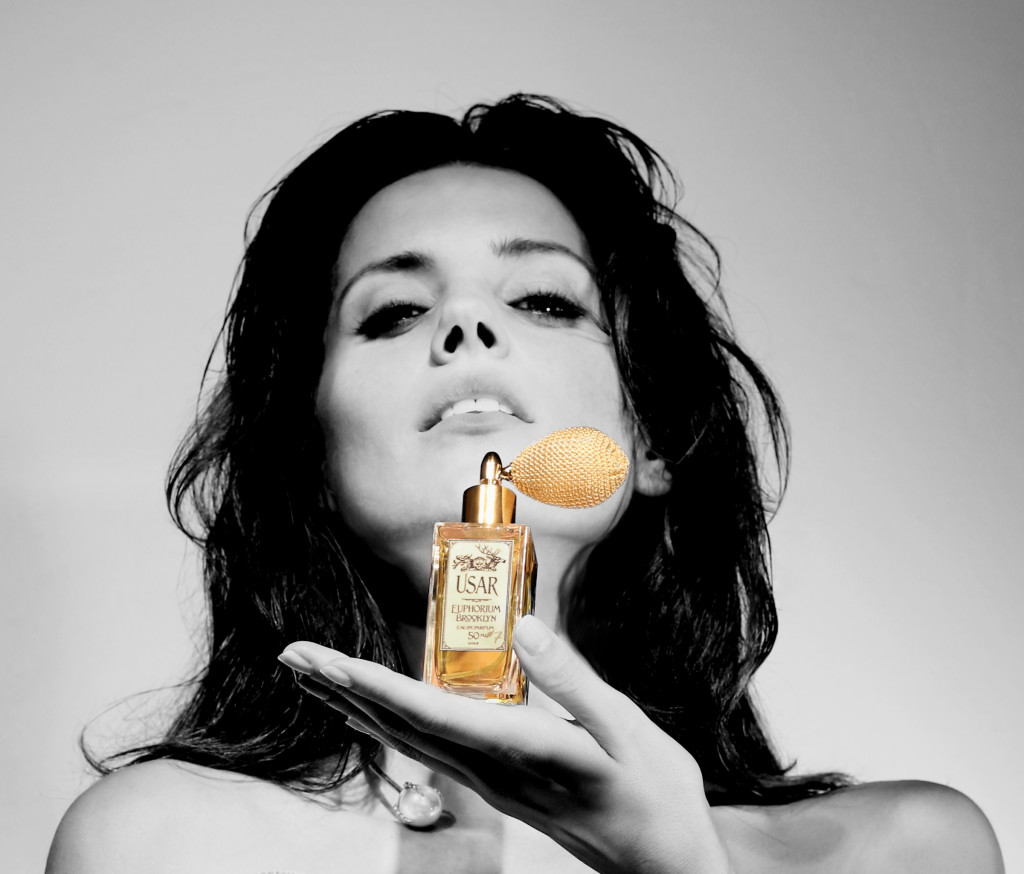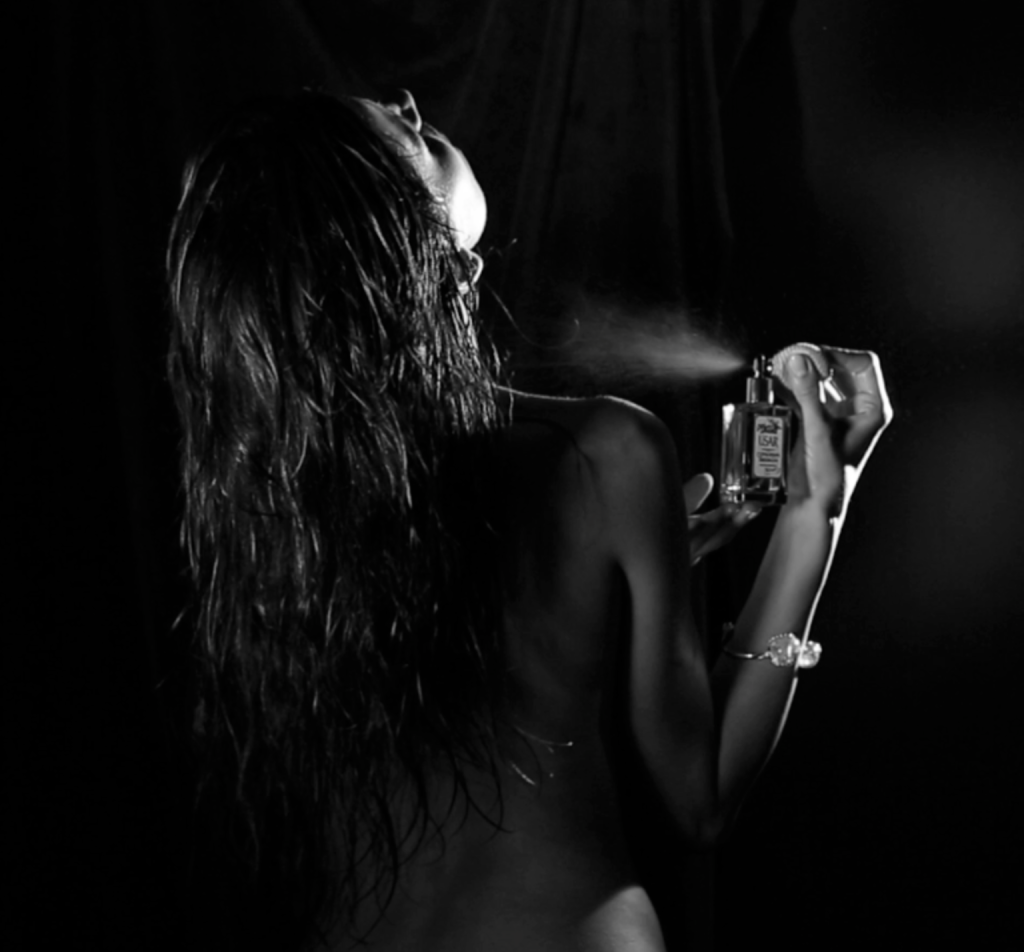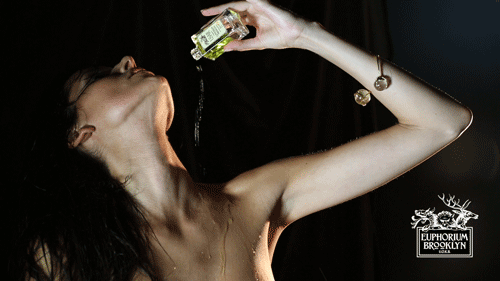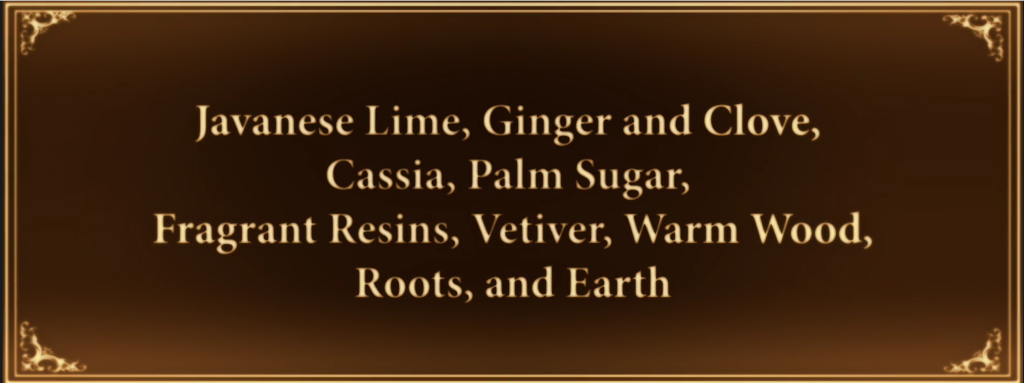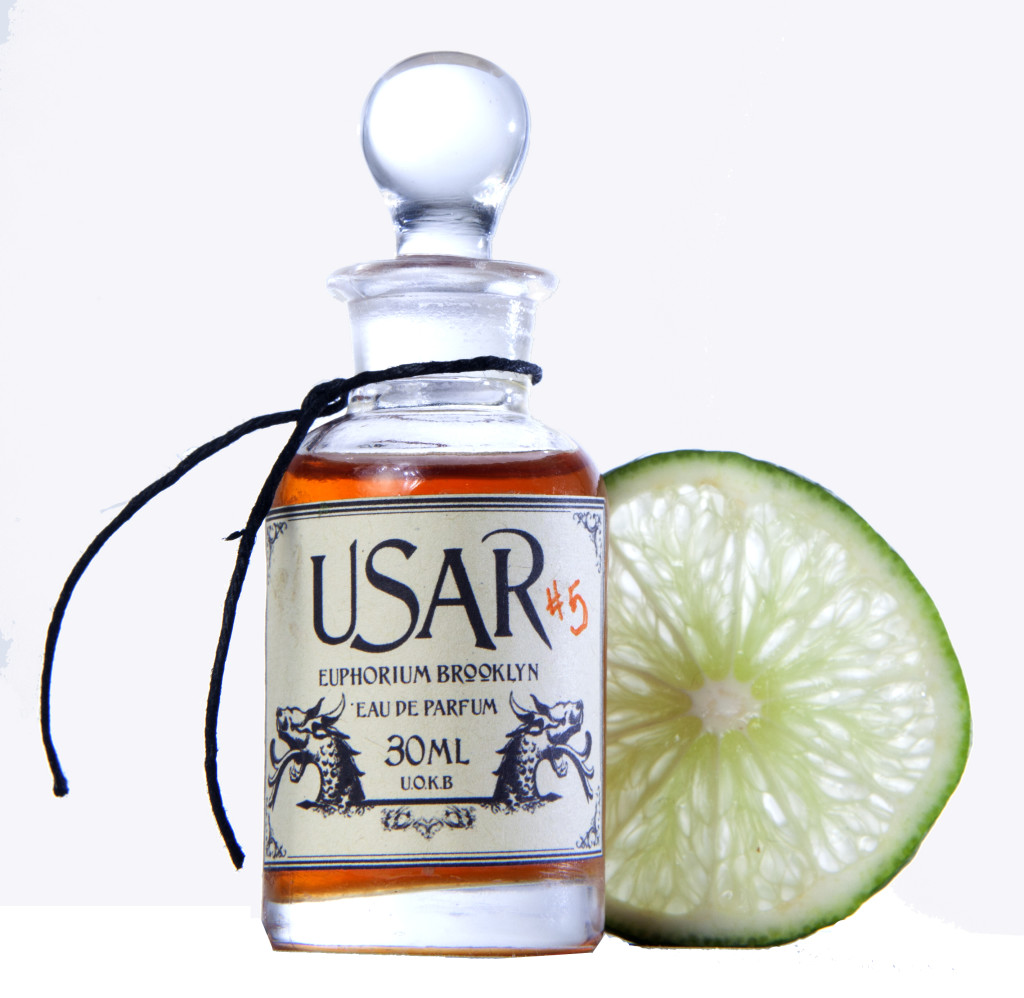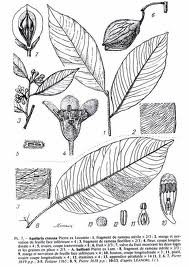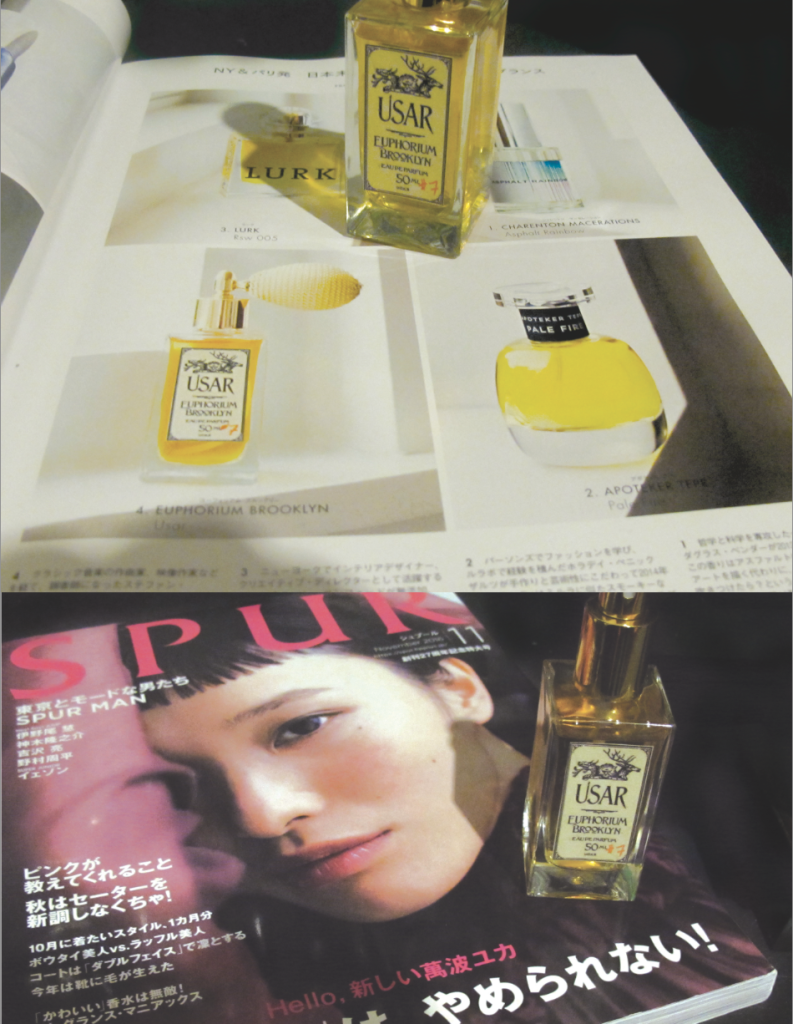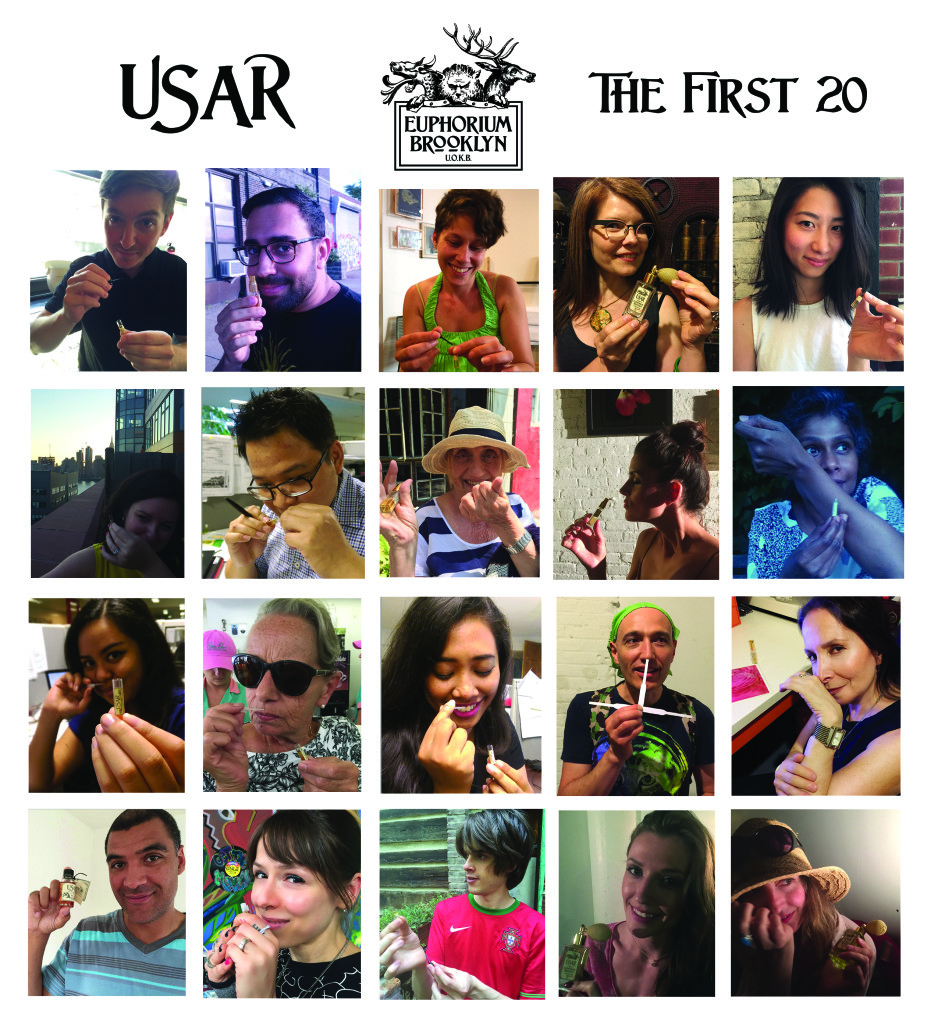USAR Eau de Parfum by Euphorium Brooklyn for Women and Men.
FRAGRANCE PROFILE
Javanese Lime, Ginger and Clove, Cassia, Palm Sugar, Fragrant Resins, Vetiver, Warm Wood, Roots, and Earth
USAR Eau de Parfum by Euphorium Brooklyn:
– Sourced from the Finest Rare and Exotic Oils, Tinctures and Absolutes
– Traditional Euphoria Inducing Komodo Process
– Handcrafted in Brooklyn, New York
– Available in 50ML (with additional bulb atomizer), 30ML, & 8ML spray top bottles
– Also available in the HERITAGE SET
PERFUMER’S INISPIRATION
A refreshing breeze drifts on the melody of an Indonesian Suling and leaves a fragrant wake in the warm,
sultry night air. Exotic and seductive, rich notes of citrus, spice, resin and root are wooed by ancient
incantations to create this vivid palette from the wild islands of the origins of perfumery.
The bright lime of Java, the Jeruk Nipis, awakens our senses, then eases to indulge us with
a feast of spices. Crisp ginger and clove sparkle like the delicate tones of the Kecapi Harp of Sunda.
Sweetened and sustained by the ocean’s offering of sweet ambergris, raw palm sugar
and rich caramel notes of benzoin from Sumatra unfold like the plaintive melodies of the music of West Java.
Deep accords sound from the golden gongs and bells of the Gamelan Degung
in intoxicating and complex layers like the most precious gaharu wood from Irian Jaya.
Just an island away, Komodo Dragons stealthily retreat from the ocean’s edge through
cool fragrant vetiver and cypriol grasses to nest in the dark damp earth. Sensual and compelling,
the roots of the Sundanese usar leads us to our deepest memories and allows our senses to
linger in sweet primal sentiment.
Find refuge in the cool earth from which we came.
– Perfumer, Rudolph Komodo (1859)
USAR Euphorium Brooklyn Eau de Parfum 2016 from stephen dirkes on Vimeo.
FRAGRANCE NOTES
Jeruk Nepis (Javanese Lime), Ginger, Clove, Vanilla Bean, Palm Sugar, Hajimon (Sumatra Benzoin),
Usar (Sundanese Vetiver), Cypriol, Gaharu (Komodo Agarwood/ Oud), Ambergris
About the Perfumer, Rudolph Komodo
1860’s co-founder of Euphorium Bile Works, Rudolph Komodo was perhaps the catalyst
for the establishment of the Euphorium and in large part, its success.
Salesman, charlatan and natural scientist, Rudolph Komodo was ever the graceful
and ingratiating host of the Euphorium. Rudolph enticed, woo’d, seduced and charmed
every guest they entertained and ensured that all inductees would encounter a bounty
of most pleasant and discrete offerings. “For a price, always for a price…”
Infamously cheap and miserly, with a keen eye on the bottom line at all times, “For a price”
was one of Mr. Komodo’s well-worn expressions. While Dr. Christian Rosenkruez felt
this stemmed from the hardships of Rudolph’s working class background, co-founder,
Etienne Chevreuil saw a meanness in Mr. Komodo’s nature and his ability to revel in
the misfortunes of victims of his greed. Ironically, it was Rosenkreuz’ compassion
and empathy that Komodo took as pity and nursed a smoldering dislike. In the case
of Chevreuil, his distain for Komodo engendered some small measure of respect.
PERFUMER’S INSPIRATION (Extended)
In 1859 Rudolph Komodo led an expedition to the Island of Komodo to bring the first
Komodo Dragons to the western world (Predating the 1925 Burden expedition by some 66 years).
Rudolph brought three specimens to Greenpoint, Brooklyn to establish a colony for research.
With several unsuccessful breeding attempts, Rudolph began creating USAR as a reptilian
love potion of sorts to increase the Dragon’s amorous activities by offering them an
accord composed of notes from their island home. Very soon, USAR became more a means
of sentimental reminiscence for the homesick perfumer to return the fragrant islands
of his youth.
Raised in Indonesia by his mother and grandmother, Rudolph was surrounded by natural beauty
throughout his childhood and demonstrated a keen interest in the natural sciences.
Hearing stories of “Ora” (The name for the Komodo Dragon in the original Komodo language)
as a child from his grandmother, Ibu Bakar (reported Ata Modo tribe descendent with
familial ties to the Bugis people and the Sultanate of Bima), Rudolph developed a life long
interest in and study of the Komodo Dragon. Mr. Komodo held with the traditional Ata Modo
people’s belief that the Komodo Dragon is the exiled brother of man from creation myth.
Descendants of the Ata Modo people believe they will always be connected to the dragons.
By studying the Dragon, Rudolph felt he was ultimately learning about himself. Rudolph was
born with a skin condition which caused scale-like disfigurement to his neck and left hand,
further connecting himself to Ata Modo beliefs. Rudolph’s father abandoned him and his mother
shortly after Rudolph was born, which Rudolph always blamed on his disfigurement.
Because he felt responsible for driving his father away, he began life a tortured soul,
longing for unattainable memories.
The Komodo Dragon detects odor by sampling the air with its long, yellow forked tongue.
The two tongue tips retreat to the roof of the mouth, where they make contact with
the Jacobson’s organ. The Jacobson’s organ (named in 1811 for its discoverer and
Rudolph Komodo’s father, Danish anatomist Ludwig Haribo-Jacobson) is an organ of
chemoreception and part of the olfactory system. It detects heavy moisture-borne odor particles.
Lighter airborne odors are detected by another set of olfactory sensory cells located in
the main nasal chambers. Mr. Komodo developed theories that odors oscillated at different
frequencies much like sound waves. He felt the Komodo Dragon possessed two olfactory
systems to receive two widely different sets of scent frequencies. Rudolph thought that
notes in a fragrance could be tuned to a specific harmony to induce an euphoric reaction.
This idea became the basis for the now renown, “Komodo Process” of harmonizing fragrances.
Rudolph attempted to train himself to detect the lower “Dragon Frequency” scents
(as received by the Jacobson’s organ) with little success beyond briefly securing an income
from private sessions of olfactive training with a select group of wealthy patrons.
Rudolph was unable to arrive at any conclusive findings, publish his research or receive
professional acknowledgement for his work.
(see “The Incident at Usti nad Labem” or “The Moravian Suppression of 1843”)
In addition to scent reception, the Jacobson’s organ is important for communicating
a variety of chemical messages, such as readiness for sexual activity and the detection
of aggression. Rudolph found his own way to continue his father’s research and began
to create olfactive aphrodisiacs. As a young man, Komodo began peddling an array of tonics
and elixirs composed mainly of alcohol, opiates and hallucinogens, as near-magical
“Minyak Hadangan” (traditional Indonesian Dyak/ Islamic Occultist, aphrodisiac/spell-casting oils).
He crisscrossed the giant archipelago from village to village, market to market, bar to bar
and brothel to brothel many times over. More importantly, Komodo was establishing an
extensive network of psychoactive botanical, opiate and fragrance material suppliers that
would go on to supply much of Euphorium Bile Works’ production for decades to come.
It was Mr. Komodo’s sharp business acumen (a master manipulator of graft, corruption
and underground financial systems), developed during these years, quite literally as a
snake oil salesman, that gave Rudolph the ability to commodify and profit from the
on goings at the Euphorium.
In his observation of Komodo Dragons, Rudolph noticed something in the nature
of that creature that affected him profoundly. He identified the Komodo Dragon’s
capacity for self-loathing. This primitive, brutal, ancient killer could not
suffer the stench of its own bilious saliva and would attempt to mask its own smell,
scenting itself by eating fragrant grasses. Rudolph imagined the myriad of bacteria,
pathogens and neuro toxins found in the mouth of the Dragon might have inspired the
usar (vetiver), cypriol and palmarosa grasses to grow even more fragrant on the
Island of Komodo. After observing a gaharu tree (agarwood/ oud) with the characteristic
scars of a Komodo Dragon bite to the trunk and its fragrant, darkened heartwood exposed,
Rudolph began years of research on pathogens as catalysts for fragrant transmogrification.
Based on his knowledge of Bugis “Tolotang” shamanism partly learned from his
grandmother’s stories of the “La Galigo” (traditional Bugis creation myths and stories),
partly cobbled together from various tribal shamans across Indonesia and partly imagined,
Rudolph was retained by the Sultan of Komodo as his personal “minyak” purveyor and
shaman/ spiritual guide.
Through his association to the Sultan, Rudolph was able to travel
abroad for a grand tour of Europe and was quick to make great use of the opportunity
the Sultan’s official connections provided.
Rudolph Komodo writes of usar (Sundanese Vetiver),

